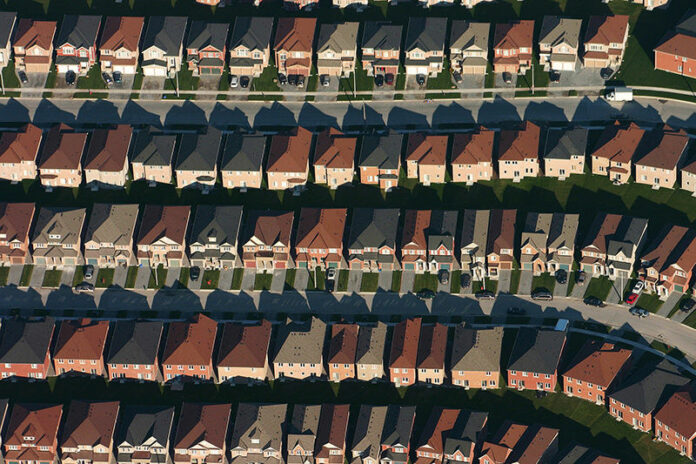RHNA allocations are about to skyrocket, what that could mean for local housing and building
Author’s note: The information contained in this article is compiled from information from the community development offices of various municipalities within the county and the Association of Bay Area Government website.
Unless you are in government, or the building industry, chances are you’ve never heard of the Regional Housing Needs Allocation (RHNA). It’s part of an old state law, passed back in the dark ages of 1969, that is meant to make sure every Californian has a place to live in the Golden State.
But with the state in the midst of a housing crisis, RHNA is about to become news as the current allocation cycle is ending and a new one is being codified, and unlike years past, this time it’s prioritizing housing and it has teeth. And for regions that haven’t been meeting their RHNA responsibilities, like Sonoma County, things are about to get a bit rough.
What the law says
In 1969, the state of California, recognizing that local governments play a vital role in developing affordable housing, mandated that all California cities, towns and counties must plan for the housing needs of its residents. This regulation states that this mandate is implemented through each community’s General Plan Housing Element, and through the Regional Housing Needs Allocation (RHNA) process.
The RHNA process is how the California Department of Housing and Community Development (HCD) determines the total number of new homes each region needs to build, and how affordable those homes need to be, in order to meet the housing needs of people at all income levels in that region.
When those numbers are finalized, regional authorities then take over to determine how those houses and housing types will be distributed within their region. Sonoma County’s regional authority is the Association of Bay Area Governments (ABAG). ABAG must create one method for determining those allocations to each county and municipality within the region, and those entities must then update their Housing Element to demonstrate that there are sufficient sites for the housing to be built, and that the necessary policies and strategies to meet the community’s housing needs are in place.
In other words, each local government must zone enough of its land to ensure that sufficient housing can be built to accommodate their housing need, based on their RHNA numbers. If a community does not have adequate suitable land to zone for high-density housing, then it will not receive state certification of its Housing Element.
This is problematic because most state funding programs for housing and community benefits require a state-certified Housing Element. Entities which do not meet these requirements risk missing out on funding opportunities, and being required to update their Housing Element every four years, rather than every eight years as well as being vulnerable to potential lawsuits by developers and housing advocates.
Penalties for noncompliance
In the past, there’s been minimal penalties for noncompliance, but due to the housing crisis, some teeth have been added to the statutes.
According to ABAG, “State Housing Element Law requires that jurisdictions plan for all types of housing based on the allocations they receive from the RHNA process. The state requires this planning, in the form of having a compliant housing element, and submitting housing element annual progress reports, as a threshold or points-related requirement for certain funding programs (SB 1 Sustainable Community Planning Grants, SB 2 Planning Grants and Permanent Local Housing Allocation, etc.). Late submittal of a housing element can result in a jurisdiction being required to submit a four-year update to their housing element.
“HCD may refer jurisdictions to the Attorney General if they do not have a compliant housing element, fail to comply with their HCD-approved housing element, or violate housing element law, the housing accountability act, density bonus law, no net loss law, or land use discrimination law. The consequences of those cases brought by the Attorney General are up to the courts, but can include financial penalties.”
In addition, as the housing element is one of the required components of the general plan, a jurisdiction without a compliant housing element may risk legal challenges to their general plan from interested parties outside of HCD.
Local governments must also implement their commitments from the housing element, and the statute has several consequences for the lack of implementation. For example, failure to rezone in a timely manner may impact a local government’s land use authority and result in a carryover of RHNA to the next cycle. The HCD may investigate any action or lack of action in the housing element.
In jurisdictions that don’t issue permits for enough housing to keep pace consistent with RHNA goals, a developer can elect to use a ministerial process to get project approval for residential projects that meet certain conditions, which means in essence a local agency no longer has approval over the project and it can be built “by right.”
The proposal for the next cycle
For the eight-year period covering 2023 through 2031, HCD has determined that the Bay Area’s RHNA is 441,176 housing units, about half of which must be affordable. By contrast, the Bay Area’s RHNA for the current eight-year period ending in 2022, was 187,990 units. This represents an increase of almost 135%, which is reflective of the state’s dire housing crisis and is consistent with the increases seen in other parts of the state.
Among the factors considered by the state when setting allocations are the prevalence of overcrowded households, households that are paying more than 30% of their income for housing and a target vacancy rate when determining the region’s total need.
With the number from the state available, ABAG convened its Housing Methodology Committee (HMC), a 37-member committee of local elected officials and staff from every county, as well as stakeholders representing diverse housing perspectives.
Sonoma County’s planning staff representative was Jane Riley, comprehensive planning manager with the county’s Permit Sonoma Department, with Noah Housh, community development director for the city of Cotati, who served as an alternate. Sonoma County’s elected representative was Councilmember Susan Adams with the city of Rohnert Park. Adams also sits on the ABAG Regional Planning Committee.
Among the goals set for its allocation process, the HMC included ensuring that the majority of housing units were located near jobs and transit and that areas with the best opportunities (deemed “high resource areas”) were assigned a fair share of affordable units in order to increase equity.
Unfortunately, despite the regional nature of the HMC, the plan utilized to identify potential building sites, Plan Bay Area 2050, makes assumptions about appropriate sites for high-density housing in Sonoma County and unfortunately has included several inappropriate locations such as flood plains, rural recreational land, industrial land and land in areas at high risk of wildfires in their modeling.
Using this data in the HMC methodology has resulted in the rural agricultural parts of the North Bay receiving high projected RHNA allocations that push growth outside of city and town limits and into areas without utilities or other services.
This is especially problematic in Sonoma County, where all local governments have voter-approved Urban Growth Boundaries (UGB’s) intended to focus housing growth within city and town limits while preventing sprawl in the unincorporated county. In unincorporated Sonoma County, there is a proposed increase of 919%, from 515 to 5,250.
Local municipalities are looking at similarly dramatic rises, including Cloverdale (211 to 300, an increase of 42%), Healdsburg (157 to 350, an increase of 123%), Sebastopol (120 to 420, an increase of 250%) and Windsor (440 to 710, an increase of 61%).
The Sonoma County Transportation Authority’s (SCTA) Housing Ad Hoc Committee, which includes Windsor Community Development Director Jessica Jones, recently collaborated on a letter to the ABAG Regional Planning Committee ahead of its October 1, 2020, meeting, expressing concerns about the inaccuracies in the Plan Bay Area Blueprint 2050 data and requesting additional time to review this data and provide input to ABAG. The letter also requests that areas that have been identified for growth in the draft Plan Bay Area 2050 Blueprint, but that are not suitable for high-density housing, be excluded from a jurisdiction’s RHNA allocation for the sixth cycle unless infrastructure can be provided within the eight-year RHNA cycle.
Since all Sonoma County areas and municipalities have fallen short of their current allocation numbers, the prospect for hitting these newer, higher targets seems slim.
A final complication is that the new cycle of allocations will also tighten the site identification rules. Entities must identify specific sites (either vacant or non-vacant, with a likelihood of redevelopment) that are zoned to accommodate housing that would meet the jurisdictions RHNA requirements, at all levels of affordability.
However, recent changes to state legislation say that jurisdictions can no longer continue to identify non-vacant sites that were included in the prior plans or vacant sites that were included in two or more consecutive planning periods that have not been developed. There is a small loophole in the new legislation that may allow these sites to be identified again if the site is zoned to allow a minimum of 15 units per acre, subject to a program in requiring rezoning within three years of the beginning of the planning period, and/or to if they allow residential use “by right” for housing developments (no discretionary review) in which at least 20% of the units are affordable to lower income households.
There is an appeal process to the state should a local jurisdictions, or a regional one, feel the allocation they’ve been assigned is not appropriate.
What’s next?
Going forward there are a few milestones to note in the process. The draft RHNA methodology is due this winter, with the final methodology including the drafts allocations coming in the spring of 2021. The appeal process runs through the rest of 2021, with the allocations being finalized by the end of 2021.
Local entities and jurisdictions will then have until January of 2023 to create and finalize their local Housing Element plans on meeting those allocations, which must be approved by the state.
Public participation is encouraged especially at public meetings and during official public comment periods following the release of discussion documents and board decisions. At ABAG ‘s website you can learn about the Housing Methodology Committee, view upcoming meetings and sign up for the RHNA mailing list.
Locally, most public entities will be discussing and ratifying reports on their current status will the current RHNA allocations as well as the proposed increases in their open council meetings. In most cases, the reports are created and given by community development directors.









